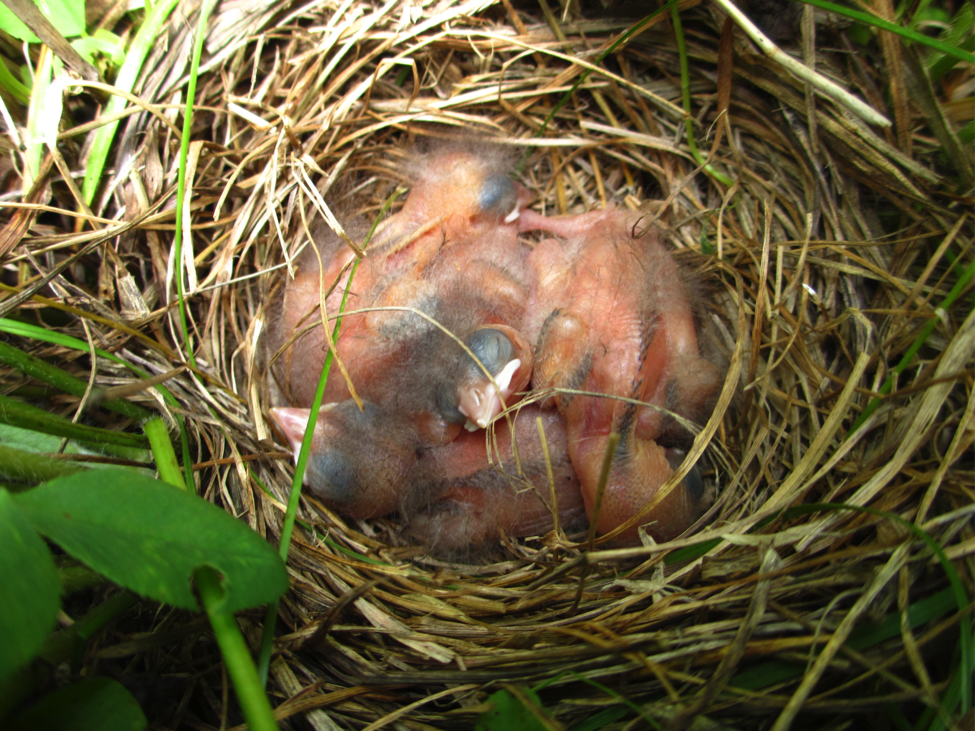Grassland Bird Conservation
Dairy farms are a prominent presence within the Vermont agriculture industry. Farmers depend on hay with high protein content to produce the highest quality and yield of milk from dairy cattle. A management conflict arises with grassland birds, such as the bobolink and savannah sparrow which are ground-nesting species. They depend on these grassland areas for breeding success in late May into mid-July. Bobolinks are most sensitive to the time of hay cutting in relation to their nesting phenology. They serve as an umbrella species for many other wildlife species that depend on grassland habitat for survival. This conflict of wildlife conservation with the livelihood of farmers brings light to the fact that management practices must be implemented to best suit the needs of both parties. If farmers were to take their first cut of hay around Memorial Day, and delay the second cut of hay by at least 65 days, then there is a very high chance that bobolinks and other nesting grassland birds will have had the opportunity to successfully nest and fledge their young.
The United States Department of Agriculture (USDA) was able to integrate this management practice into the Environmental Quality Incentive Program (EQIP). Through this program, qualified farmers were receiving payment of approximately 135 dollars per acre if they were to alter their management practices. Landowners that were eligible and willing to enroll in the program were required to sign a five-year contract, but receive payment for only three years. Approximately 1,000 acres of land was enrolled within the five years the program ran. Eventually the program was reevaluated by the USDA and could no longer offer a high incentive to subsidize participating landowners. Due to the decreased monetary incentive, nearly all landowners did not seek to renew their contracts with the program.
In 2013, researchers from the University of Vermont lead by Allan Strong, Associate Dean of the Rubenstein School of Environment and Natural Resources, and researchers from the University of Connecticut led by Stephen Swallow reevaluated various techniques to continue the Bobolink Project. They asked qualified landowners to evaluate how much it would really cost to enroll their land into grassland bird conservation with the public paying for the cost of management rather than the government. Since bobolinks are often an avian species described as charismatic 'megafauna', with a high public interest and concern, there was a strong chance that the public could directly pay landowners to change their management practices for bird friendly habitat. Since the project is grant funded, all money raised would go directly to landowners.
Agricultural Land, Land Management, Land Protection, Outreach, wildlife
Approximately 1000 acres of ideal grassland bird habitat has been enrolled into this conservation project since the inception of this project. In 2013, a total of 200 acres were enrolled at about 160 dollars per acre. In 2014, a significant rise of landowner interest in the program yielded about 340 acres of land enrolled at about 95 dollars per acre. It is currently expected for 2015 that over 500 acres of land will be enrolled in the grassland bird conservation program at about 95 dollars per acre.
Through the extensive outreach efforts of the researchers, The Bobolink Project has raised over 100,000 dollars in the past three years to aid the conservation grassland birds in Vermont while supporting the landowners.
Natural Resources Conservation Service
University of Vermont Extension
University of Connecticut
Noah Perlut, University of New England
Shelburne Farms
United States Department of Agriculture
Rubenstein School of Environment and Natural Resources
Many Champlain Valley landowners
The challenging technique of interdisciplinary problem solving process has proven to be a critical course of action when attempting to meet their goals and objectives. It is imperative to consider all parties involved when attempting to conserve grassland birds.
Avoiding significant financial overheard is major concern for the program moving forward. The program is in its final year of being funded by a grant, and new resources to cover administrative costs must be proposed to continue directing all pledged funds to landowners.
The Bobolink Project
